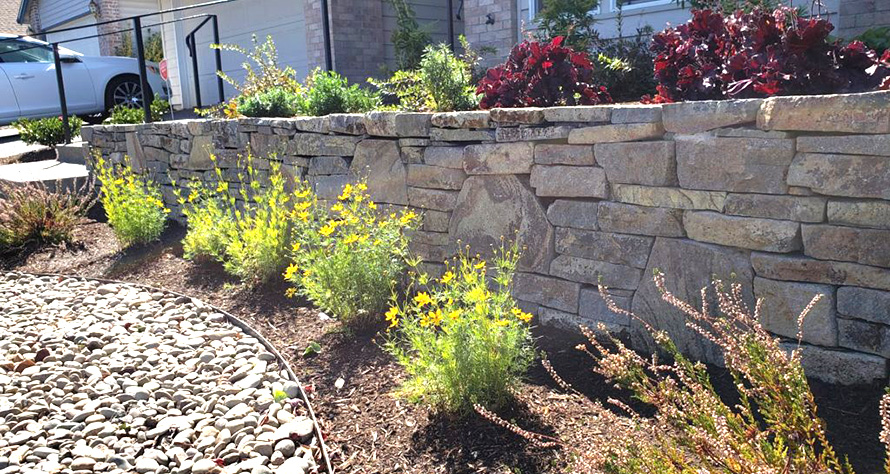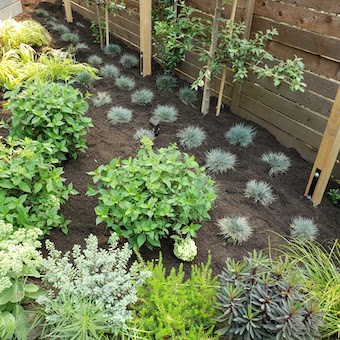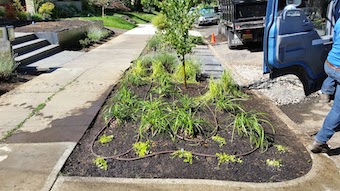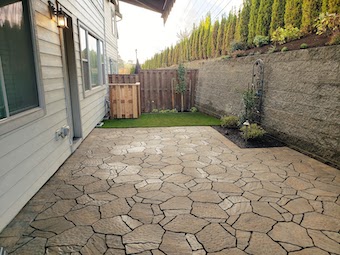
Here in the Willamette Valley, we are blessed with streams, rivers, and lakes aplenty and water is seemingly everywhere. Yet in spite of all this water and our rain-soaked reputation, summers in the Pacific Northwest can be on the dry side. In times of drought—like the drought we are currently in—water conservation becomes a real concern.
Luckily, water-wise landscape design is nothing new. A number of practical tips can make a difference in your yard’s water consumption—whether you are planning a new design or maintaining an existing garden.
1. Select Water-Wise Plants
In general, indigenous plants native to the region will fare better and typically require less water than non-native species. But this does not mean you can’t have non-native plants in your design. For a water-efficient yard and garden, look for drought-tolerant plants that can also survive our rainy seasons and winters. You might also want to check out these resources:

Water-efficient landscape plant list and Water-Wise Plant Profiles.
2. Plant in Groupings
Grouping plants with similar water needs in your design allows for more efficient watering as you can water these zones separately. You can also group plants by the amount of sunlight they need (or can tolerate) and plan for shade accordingly.

3. Water Smart
Be mindful of how, where, and when you are watering. Make sure you are getting water to plant roots and watering long enough to encourage deeper roots. Plants with shallow root systems are more prone to stress from the summer heat and arid conditions. Minimize water waste by carefully planning and monitoring your irrigation and sprinklers. Soaker hoses, drip lines, and sprinkler systems on a timer will help reduce water waste. Avoid watering in the heat of the day to minimize evaporation. For more tips, check out our previous blog on efficient irrigation systems.

4. Include Hardscapes
Patios, walkways, decks, walls, and other hard surfaces serve a dual purpose in the water-wise landscape. For starters, these hardscapes provide both function and form, bringing added interest and style into a design. Hardscapes also serve to break up the landscape, reducing the amount of garden space needing irrigation, and can help define areas for plant groupings (see #2 above).
5. Tend the Soil
Hard-packed clay is common here in the Pacific Northwest. Amending the soil to create ideal growing conditions can go a long way to helping plants thrive, especially during a dry spell or heatwave. Before planting, you may want to test your soil and enrich it with compost, or nutrients that may be missing. In an established landscape or garden, test the soil periodically and amend as needed. You should also apply a top dressing of mulch to help with moisture retention and prevent weeds from getting a foothold.

6. Minimize Lawn Size
To reduce the water footprint of your yard, consider shrinking the size of your lawn. Lawns require more water per square inch than any other area of the landscape.
7. Mind Your Mowing
Grass length and the frequency of mowing are important factors to maintaining a healthy lawn. Infrequent mowing requires a deeper cut to return grass to the proper length, which in turn can actually stop a lawn from growing or require additional watering to recover. As a good rule of thumb, you never want to cut more than a third of the length. Conversely, keeping your lawn too short can stress the grass and cause it to turn brown, especially during the dry season.
Following these simple tips can help cut down your water consumption and still give you a beautiful landscape. If you want to make some changes to your design, or start from scratch, contact Landscape East & West today. Our landscape designers are experts at creating water-efficient and low-maintenance landscapes homeowners love to live in.
